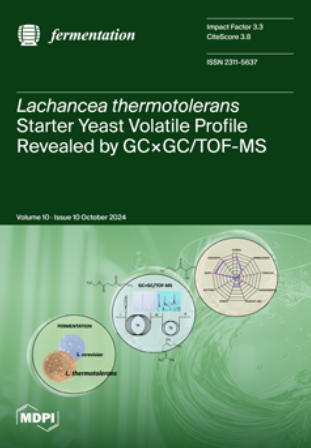基于玉米芯的自释放碳生物膜载体的制备及其反硝化性能
IF 3.3
3区 农林科学
Q2 BIOTECHNOLOGY & APPLIED MICROBIOLOGY
引用次数: 0
摘要
具有低碳/氮(C/N)比的废水普遍存在并且难以处理。添加外部碳源是处理此类废水的有效方法。因此,我们旨在利用农业废弃物(玉米芯)、聚乙烯醇和海绵铁以不同比例制备自释放碳生物膜载体,以提供促进反硝化的碳源,为微生物提供最佳环境。我们发现,累积超过60天的MAC生物膜载体的碳释放量为116.139 mg化学需氧量(COD)·g−1,而累积的总氮释放量约为0 mg·(g·d)−1。24小时后,NO3−-N的去除率达到98.1%,而碳源的理论利用率(以COD计)稳定在90.34%。此外,反硝化菌和纤维素降解菌的丰度之和为49.89%。此外,生物膜载体被用作有助于纤维素降解的功能载体,海绵铁产生Fe2+为反硝化细菌提供电子供体和穿梭物并形成铁循环,从而诱导微生物丰度增加的过程;这种增加促进了微生物对纤维素的降解和通过种间细菌合作的协同反硝化作用。本研究为提高低C/N比废水的脱氮效果提供了一种新的有效方法。本文章由计算机程序翻译,如有差异,请以英文原文为准。
Preparation of Self-Releasing Carbon Biofilm Carrier Based on Corncob and Denitrification Properties
Wastewater with a low carbon/nitrogen (C/N) ratio is widespread and difficult to treat. The addition of an external carbon source is an effective method for treating such wastewater. Therefore, we aimed to prepare a self-releasing carbon biofilm carrier using agricultural waste (corncobs), polyvinyl alcohol, and sponge iron in various ratios to provide a carbon source that would facilitate denitrification, providing an optimal environment for microorganisms. We found that the carbon release of the MAC biofilm carrier that accumulated over 60 d was 116.139 mg of chemical oxygen demand (COD)·g−1, whereas the accumulated total nitrogen release was approximately 0 mg·(g·d)−1. The NO3−-N removal rate after 24 h reached 98.1%, whereas the theoretical use rate of the carbon source (in terms of COD) was stable at 90.34%. In addition, the sum of the abundances of the denitrifying and cellulose-degrading bacteria was 49.89%. Furthermore, biofilm carriers are used as functional carriers that contribute to cellulose degradation, a process in which sponge iron produces Fe2+ to provide electron donors and shuttles for denitrifying bacteria and forms the iron cycle, thereby inducing an increase in microbial abundance; this increase then facilitates the microbial degradation of cellulose and synergistic denitrification through interspecific bacterial cooperation. This study provides a new and effective method for enhancing the denitrification of wastewater with low C/N ratios.
求助全文
通过发布文献求助,成功后即可免费获取论文全文。
去求助
来源期刊

Fermentation-Basel
BIOTECHNOLOGY & APPLIED MICROBIOLOGY-
CiteScore
3.80
自引率
18.90%
发文量
594
审稿时长
7 weeks
期刊介绍:
Fermentation-Basel is an international open access journal published by MDPI, focusing on fermentation-related research, including new and emerging products, processes and technologies, such as biopharmaceuticals and biotech drugs. The journal enjoys a good reputation in the academic community and provides a high-impact forum for researchers in the field of bioengineering and applied microbiology.
 求助内容:
求助内容: 应助结果提醒方式:
应助结果提醒方式:


